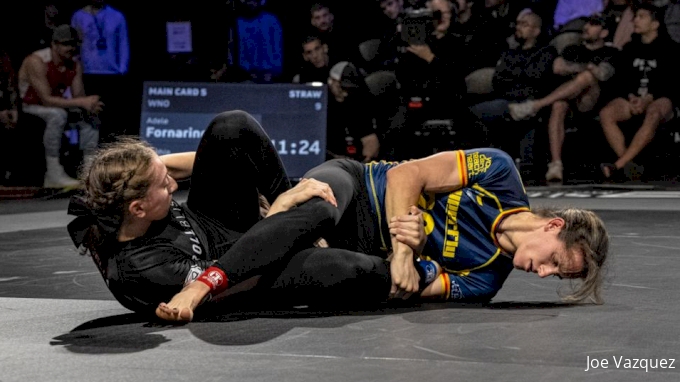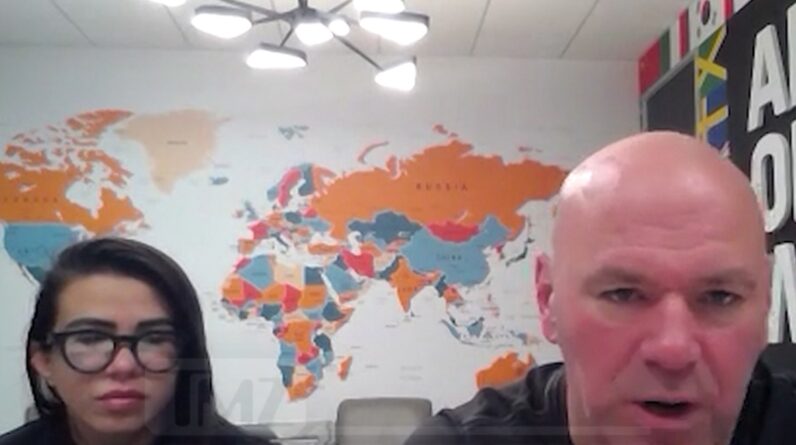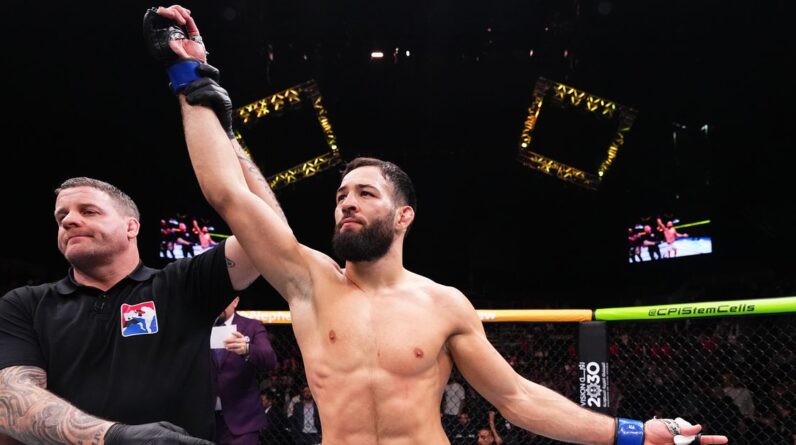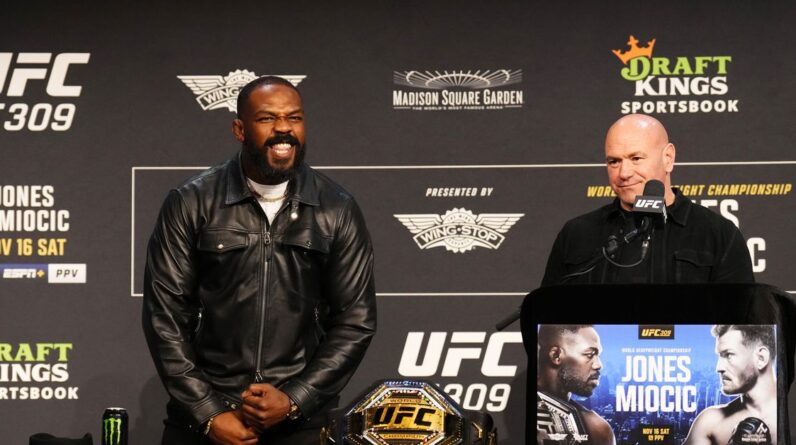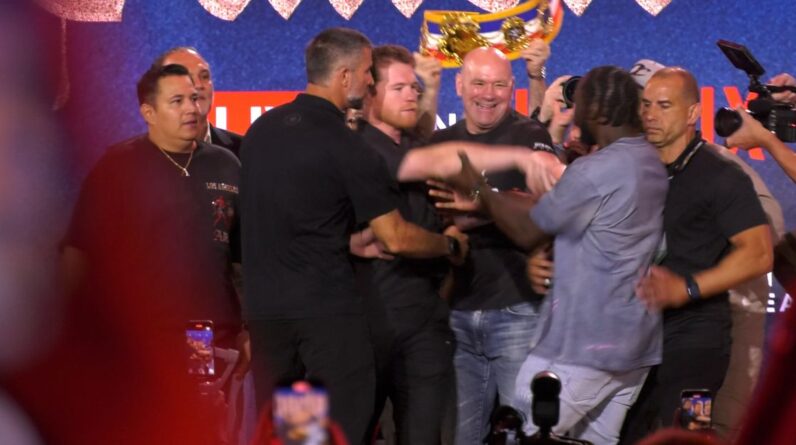Long before he was identified as part of the crew behind one of the largest cash heists in history, Lee Murray already had a legendary reputation in combat sports.
A new documentary, Catching Lightning, seeks to tell Murray’s story, which includes an infamous street fight with UFC Hall of Famer Tito Ortiz, his lone bout in the UFC, a road rage incident that likely changed his life forever, and the bank heist that ultimately earned him a 25-year sentence behind bars.
The documentary debuts on April 7 on Showtime.
Emmy winner Pat Kondelis considers himself a massive MMA fan and knew Murray’s name before he tackled the subject in his new documentary. But he was utterly fascinated once he started digging into the life and career of the now 45-year-old former fighter.
“Lee is a mythical figure,” Kondelis told MMA Fighting. “One of the challenges in the story, what I wanted to accomplish, was trying to get his perspective, and see past the myth and the legend of Lee Murray and [give] a three-dimensional look at Lee Murray as a human being and include all these different perspectives in this very, very complex and convoluted story [with the bank heist] that the police described as a spiderweb.
“There’s so many different pieces to this puzzle, so I wanted to get them all together and present it to the audience with the most accurate, full look at the picture of the puzzle that has been done before.”
The documentary features voice recordings from Murray that were taken in prison by his wife and a longtime friend who spent time with him in Morocco. It’s the first time in over a decade that Murray’s voice has been heard after his prison sentence was extended from 10 to 25 years for his part in the Securitas depot bank heist in 2006.
The robbery, which included a bank manager and his family being kidnapped, was allegedly orchestrated by Murray and several other men, who escaped with $92.2 million in cash. There was more than $250 million cash in the depot at the time of the robbery, but the men involved couldn’t steal any more because they ran out of room in their vehicles.
A total of 14 employees were held hostage while the robbers — brandishing weapons including AK-47s, shotguns and handguns — looted the bank depot.
Murray eventually fled to Morocco before he was captured and convicted on charges related to the robbery. He’s spent the last 17 years behind bars and has 12 years remaining on his sentence.
Kondelis promises the documentary will provide a detailed look at the Securitas depot robbery, including interviews with employees held hostage that night and the police who led the investigation, which ended with eight men convicted in relation to the crime.
“What shocked me was how Hollywood-esque this whole heist was,” Kondelis said. “The amount of planning, preparation, surveillance that this crew did with the robbery is phenomenal. I hate to say it, but it was impressive. That crime was pulled off flawlessly.
“Now, there’s two chapters to that. The first part, the prep and the execution were done amazingly well. Everything falls apart after that, which we do get into in the documentary. But the prosthetics and the kidnapping and the things that they go through, you don’t see this happen in real life. It only happens in Heat and movies like that in Hollywood.”
According to Kondelis, who never actually spoke directly to the one-time UFC fighter, Murray addresses his role in the bank heist for the first time in the recordings obtained by his wife and friend.
“For the first time ever, and the first time in 17 years publicly, you’re going to hear Lee Murray’s voice,” Kondelis said. “Not only are you going to hear from Lee, but you’re going to hear everything for the first time as he discusses what happened, why it happened, how it happened.
“Everybody’s going to walk away with much greater knowledge about the heist itself and Lee Murray as a person.”
Unless his sentence is reduced, Murray is expected to remain in prison at least until 2035. He’s jailed in Morocco, where overcrowded prisons have come under investigation for poor conditions; there have been reports of excessive force and prisoners being held in isolation for extended periods of time.
While Kondelis doesn’t deny Murray should have to pay for his crimes, he believes the former fighter has endured plenty of punishment. He adds many of the co-conspirators involved in the bank heist have already been released in the U.K. while Murray still has more than a decade left to go in his sentence.
“I know the situation is not good where he is in Morocco, 17 years in those kinds of conditions, I can really only imagine,” Kondelis said. “We go into it a lot in the documentary from a firsthand perspective. There’s people that were initially arrested with him in Morocco that had nothing to do with the crime that speak on camera, so they were there when the arrest was made, spent a year in prison with Lee. They go into great detail about the conditions and what happened. It’s not good.
“I don’t condone what he did at all. It was a crime. He shouldn’t have done it. I think he should go to prison for it. They doubled his sentence, they initially gave him a 10-year prison term. There’s no parole in Morocco. So 10 years of prison time in Morocco is probably the equivalent of 20 or 25 years in the U.S. or the UK from a standard point — comfort, safety, health, all of those things. So the fact that he’s been there for 17 years and he effectively got a 28-year sentence because they didn’t give him a sentence until he was three years in — they didn’t give him credit for time served — that’s a staggering amount.”
Kondelis said police made it clear during his investigation into the robbery that a message was being sent with his lengthy prison sentence. But in his opinion, Murray’s continued suffering behind bars isn’t necessary.
“I don’t know what good can be done from keeping him in prison any longer,” Kondelis said. “He’s paid a thousand fold heavier price for this than anybody else involved. I know there were people who were terrorized during this process but it’s very clear they didn’t physically harm anybody, they didn’t fire a weapon, this was about a bank heist, a bank robbery.
“It’s hard not to think come on, 17 years, what good can it do for anybody to keep him there another 12 years in Morocco?”
Long before he was sentenced to prison for the Securitas heist, Murray had an extensive criminal history involving gang activity and drug dealing. He eventually discovered MMA, and that served as a positive outlet.
In 2002, following UFC 38 in London, Murray engaged in a street fight with Ortiz that suddenly made him a household name with MMA fans. Two years later, he made his first and only appearance in the UFC, tapping out Jorge Rivera in the first round.
Murray was expected to return to the UFC, but he was denied entry into the U.S., and Kondelis believes that was the turning point in a potentially great career in combat sports.
“I think his former trainer said he was offered a three-fight deal by the UFC, but some law enforcement in the UK had sent in a report that he was involved in a road-rage accident that seemed to change everything,” Kondelis revealed. “It was not his fault, but he was tried for it, though, and it was dropped. We get in that in the documentary, but it seems like that was a huge fork in the road. … His dream was to fight in the UFC, and at that moment, it was squashed.”
Murray fought once more, losing a unanimous decision to future UFC champion Anderson Silva in Cage Rage. In 2005, he was stabbed multiple times outside a night club and nearly lost his life, but he still intended to compete again.
“He was scheduled to fight for the Cage Rage championship after he recovered from the stabbing,” Kondelis said. “He was training five weeks later after the stabbing and going into a coma himself.
“But that road rage incident was a huge fork in the road for his life, and it changed everything. I have to believe if that didn’t happen, the Securitas heist wouldn’t have happened.
“It’s such a fascinating story, and the character at the center of it is Lee Murray, and I’ve never come across a character more fascinating than Lee Murray. He’s the most interesting person I’ve ever focused on in a documentary.
“The legend of Lee Murray still lives. I hope people will see this now and gain a greater understanding of who Lee is.”
The four-part Catching Lightning series begins streaming Friday on Showtime and makes its cable debut on Sunday.


